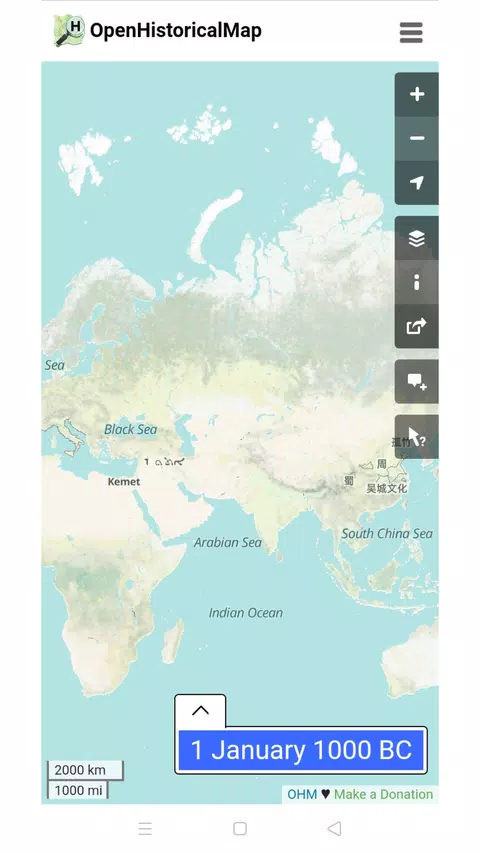
Open Historical Map
Open Historical Map
Interactive Timeline Slider
Collaborative Editing
Multiple Historical Versions




Key Features of Open Historical Map
Transform your experience with Open Historical Map's main features.
Interactive Timeline Slider
Filter map data from 4001 BCE to present day using a dynamic timeline slider to visualize how places changed throughout history
Explore features and benefits.
Experience innovation at hand.
Download and start using.
Collaborative Editing
Users can contribute historical map data by editing features, georeferencing old maps, and participating in community mapathons
Improved performance and stability.
Regular software updates.
Enhanced user experience.
Why choose Open Historical Map
Streamline your life with Open Historical Map today!
Multiple Historical Versions
Preserves multiple copies of geographic features as they change over time, unlike OpenStreetMap which only shows present-day data
Wikipedia Integration
Displays relevant Wikipedia articles and Wikimedia Commons content in a sidebar when features are selected on the map
Specialized Map Styles
Offers two unique visualization styles - a functional Historical style and an artistic Woodblock style for different viewing preferences
Reviews about Open Historical Map
Discover our users' feelings and comments.
FAQs about Open Historical Map
Browse the most frequently asked questions that you may interested in.
What is OpenHistoricalMap?
OpenHistoricalMap (OHM) is an interactive online collaborative mapping project that aims to create the world's most comprehensive historical map using OpenStreetMap technology. Unlike OpenStreetMap which only shows present-day data, OHM preserves and displays historical geographic data throughout different time periods.
How can I contribute to OpenHistoricalMap?
You can contribute by going to the main map, zooming in to a place of interest, and clicking the 'Edit' button. The editing experience is very similar to OpenStreetMap. Users can add historical data, edit existing information, and help improve the accuracy of historical maps.
What kind of historical data does OpenHistoricalMap collect?
OHM focuses on mapping historical geo-objects such as shorelines, political boundaries, buildings, roads, and points of interest. It maintains multiple versions of objects as they change over time, but does not collect data on historical events per se.
Who contributes to OpenHistoricalMap?
Contributors include members of the OSM community, academic dataset providers, historical societies, digital humanities students and faculty, armchair historians, open data providers, open data enthusiasts, and various other map data creators.
How is OpenHistoricalMap different from OpenStreetMap?
While OpenStreetMap only includes current data and deletes outdated information, OpenHistoricalMap specifically welcomes and preserves historical data, maintaining multiple versions of features as they change through time. It serves as an outlet for keeping historical information that doesn't belong in OpenStreetMap.
What visualization styles are available on OpenHistoricalMap?
The main project website offers two visualization styles for the historical data: a functional Historical style and an artistic Woodblock style, both displayed through vector tiles.
Start your free trial for Open Historical Map today!
Enjoy your everyday with Open Historical Map.
Let's keep in touch!
Subscribe to our newsletter for the latest news and updates.
By subscribing, you agree to Open Historical Map Privacy Policy.

